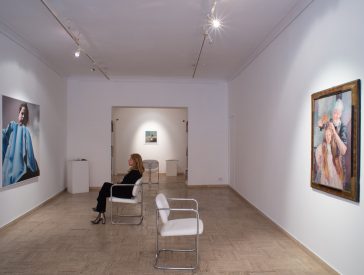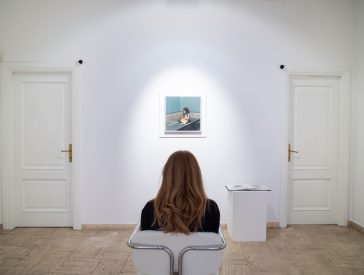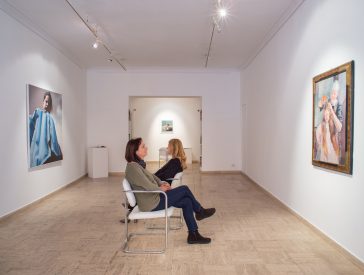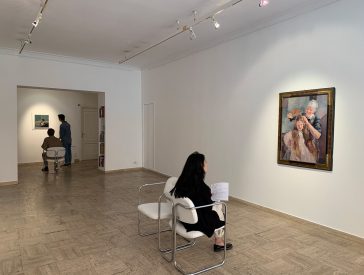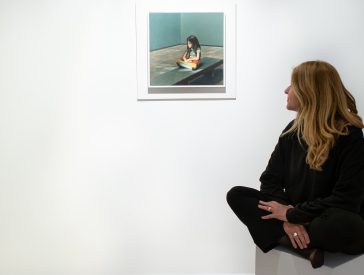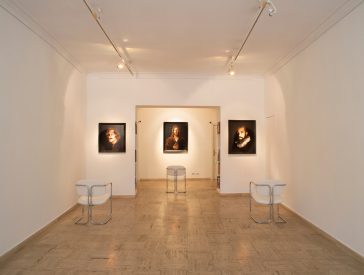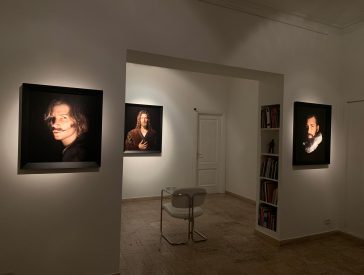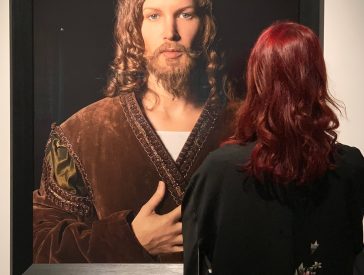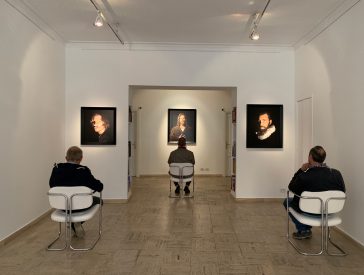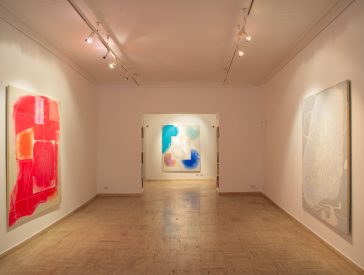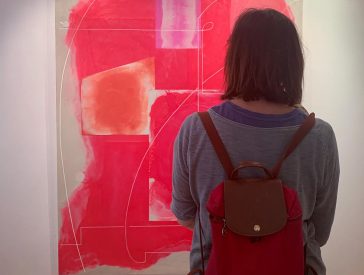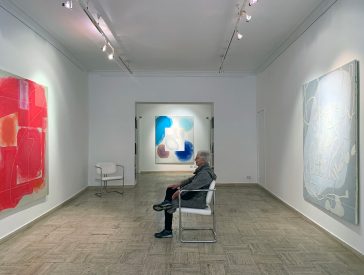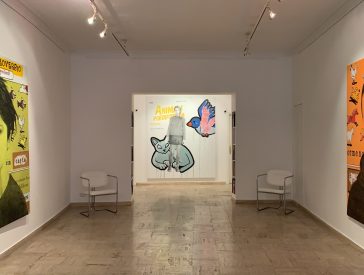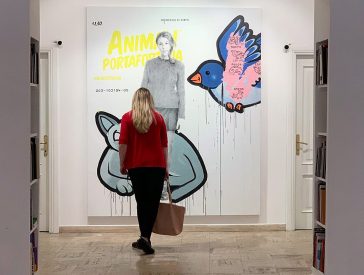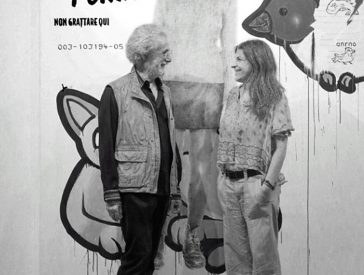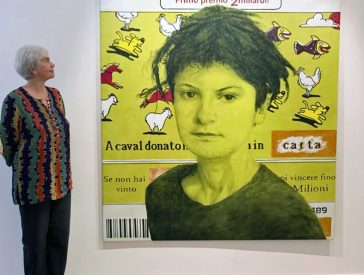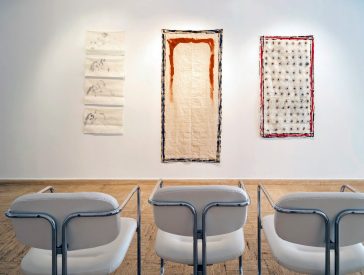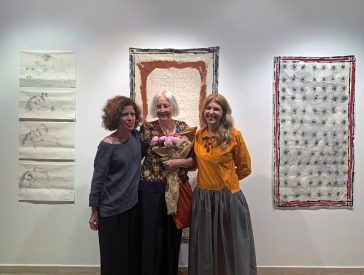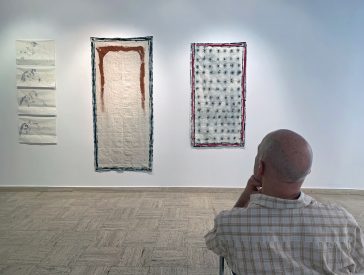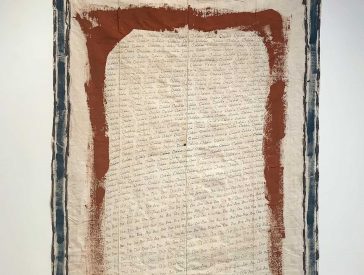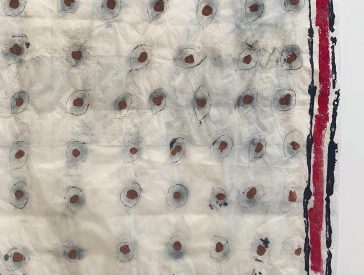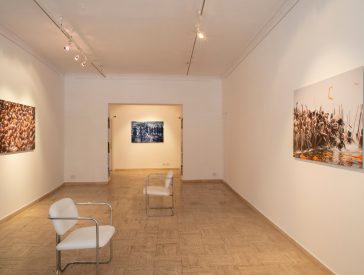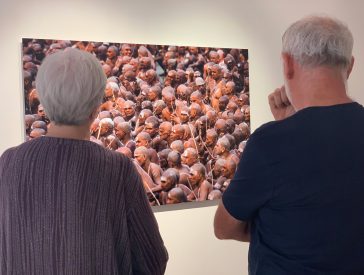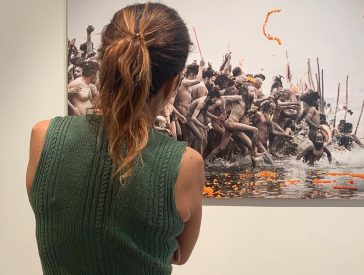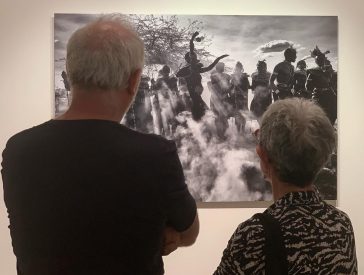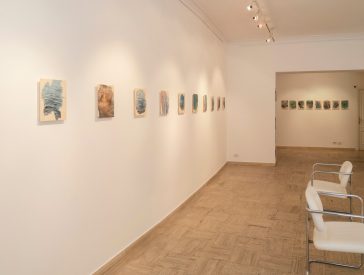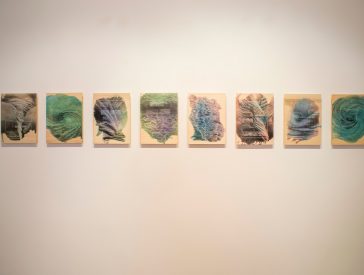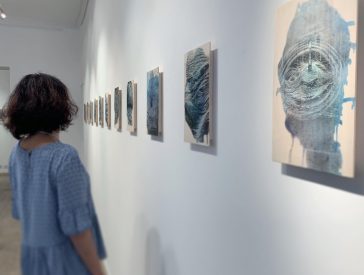MISCELLANEOUS vol. 0 – The Art Practice is a one-of-a-kind exhibit. Divided into seven chapters, it springs from a deep reflection on the relationship between the viewer and the exhibition, and, further, on the agency the former has on the latter.
At times, a gallery can welcome hasty visitors who brush through the display quickly; as they leave, my ears are struck by the quiet, rumbling complaints of the artwork on the walls. Hurt, they demand more careful attention. The space itself feels somewhat violated by such distracted, fleeting appearances.
In this light, this time I ask the viewers choosing to visit Miscellaneous – The Art Practice for their undivided attention and their time. Three chairs have been placed at the center of the gallery; each chair faces a different wall, hosting but a single artwork. The viewer is invited to take a seat, make themselves comfortable, and take time to enter into a dialogue with the work they have before them.
I ask the artwork to endure the empty wall’s overbearing presence, and to use its evocative and suggestive force to absorb all of the attention.
I ask the gallery owner, and hence myself, to use the same attentive care that is required from viewers; and then I ask the curator, again myself, to change the exhibit each week, transforming the space and the exhibit itself into a performance.
And finally I ask the artists, who make all of this possible, to allow themselves to be involved in a performative experience of continued becoming.
– Daina Maja Titonel, May 2019
Chapter 1 / THE ORIGINS
Armando Spadini, Angelo Titonel
May 14 — May 18, 2019
On display in this exhibit are two paintings by Angelo Titonel (1938-2018), both portraying his daughter Maja as a child, and the painting “La pettinatrice” by Armando Spadini (1883-1925), a portrait of his own young daughter.
The exhibit is compounded by the performance “Le origin” (My Origins) by Daina Maja Titonel.
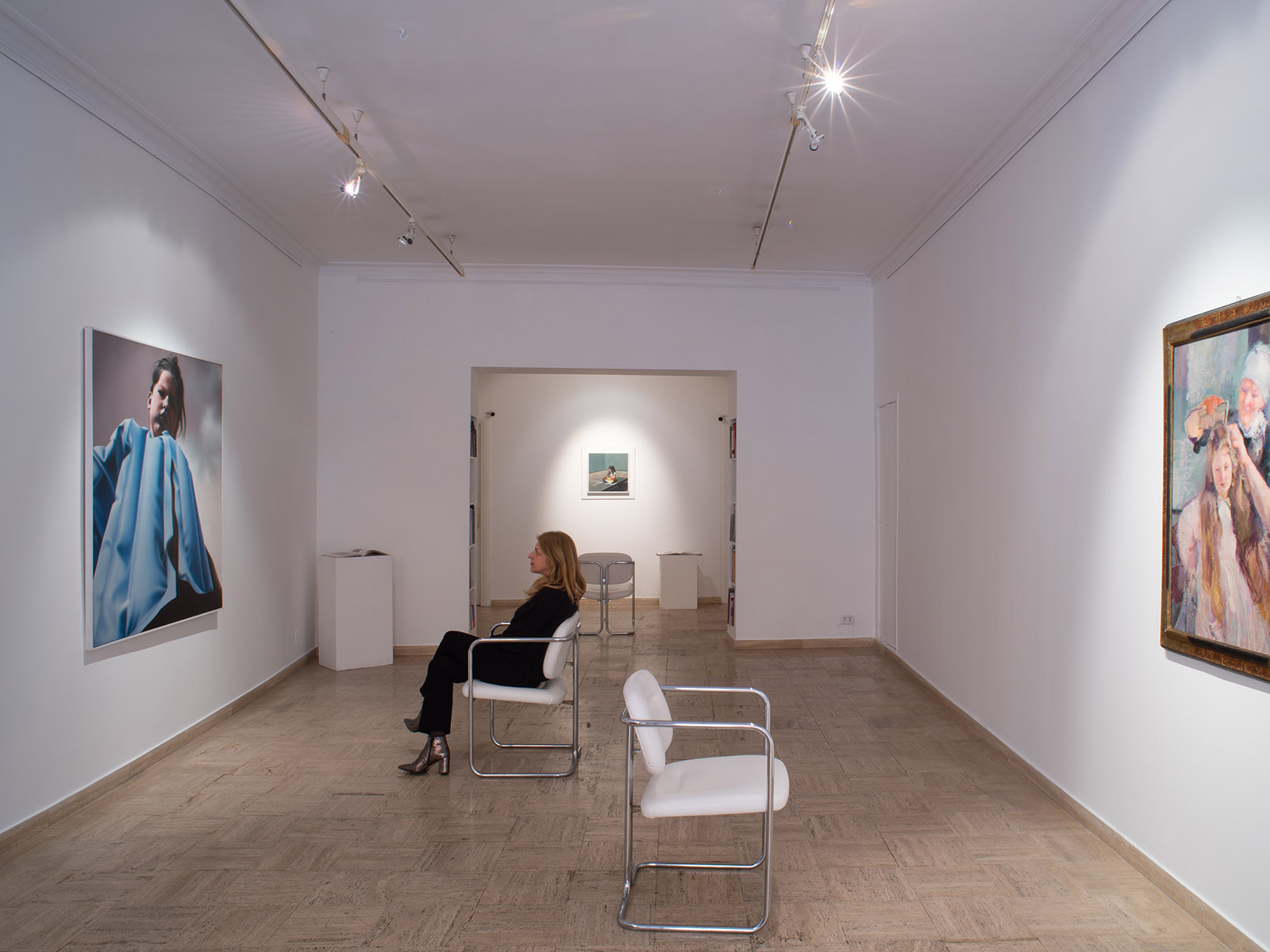
Chapter 2 / ETERNAL LOVERS
Milica Ćirović
May 21 — May 25, 2019
The exhibition Eternal Lovers contains a collection of performative photographs by Serbian artist Milica Ćirović. In it, she interprets seven male figures who have charmed her with their cultural or aesthetic influence.
The collection portrays her platonic, intellectual longing for men unreachable to her in time and space.
Through the images, her quest to know them turns into eroticism, a metamorphosis triggered by the deep, unrelenting desire that urges the lover to want to become one with their beloved.
On display: Gian Lorenzo Bernini, Albrecht Dürer, El Greco.
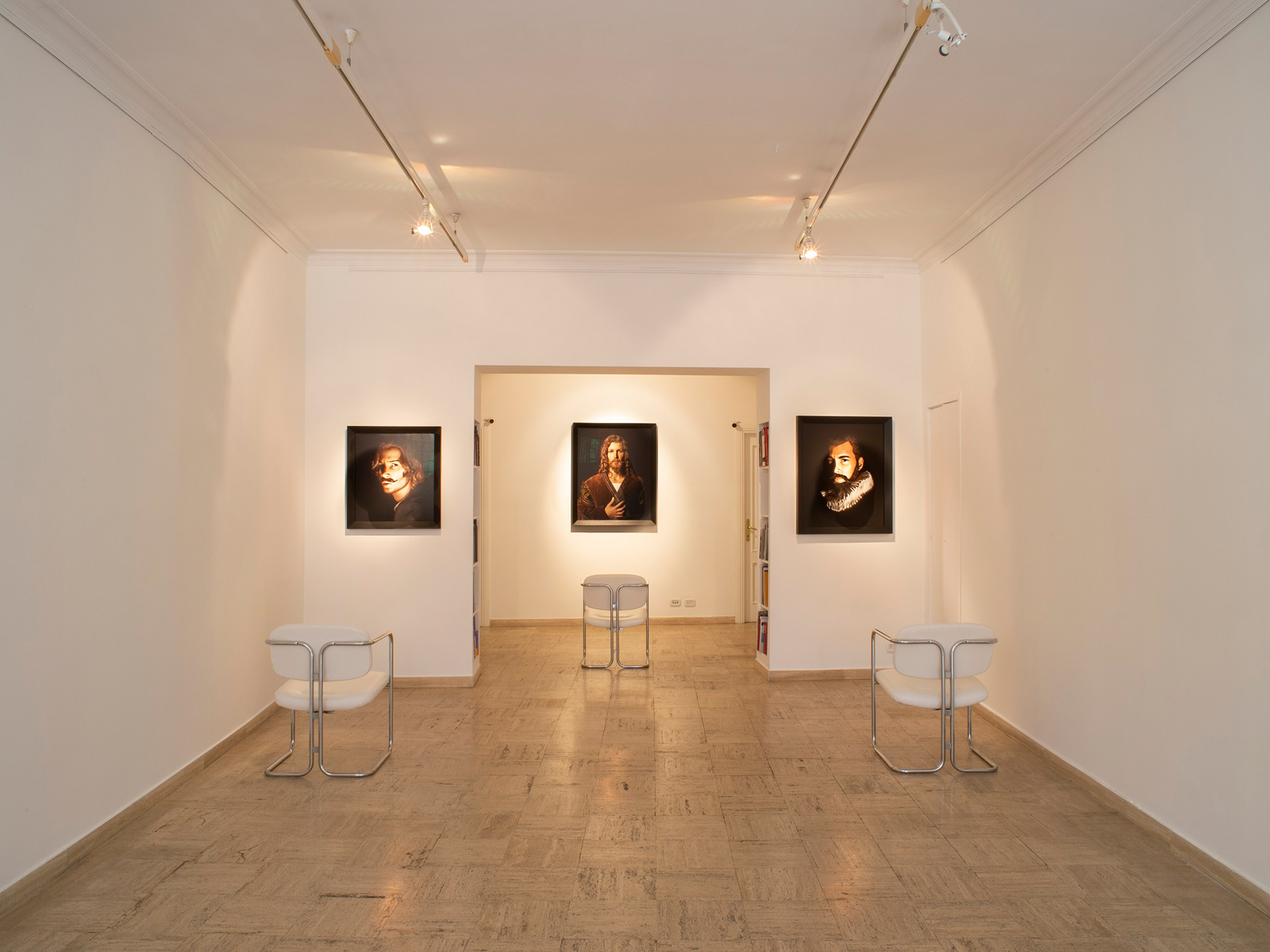
Chapter 3 / INCLUSIONS
Peter Flaccus
May 28 — June 1, 2019
The three big paintings on show have different origins, different rhythms, and different temperatures, but their structures each contain one or more “windows,” or, as I prefer to call them, “inclusions,” that is, visual material that has been enveloped by the larger composition. So those rectangles are comparable to geologic inclusions, or xenoliths, which are older mineral fragments trapped inside a larger rock formation.
– Peter Flaccus, May 2019
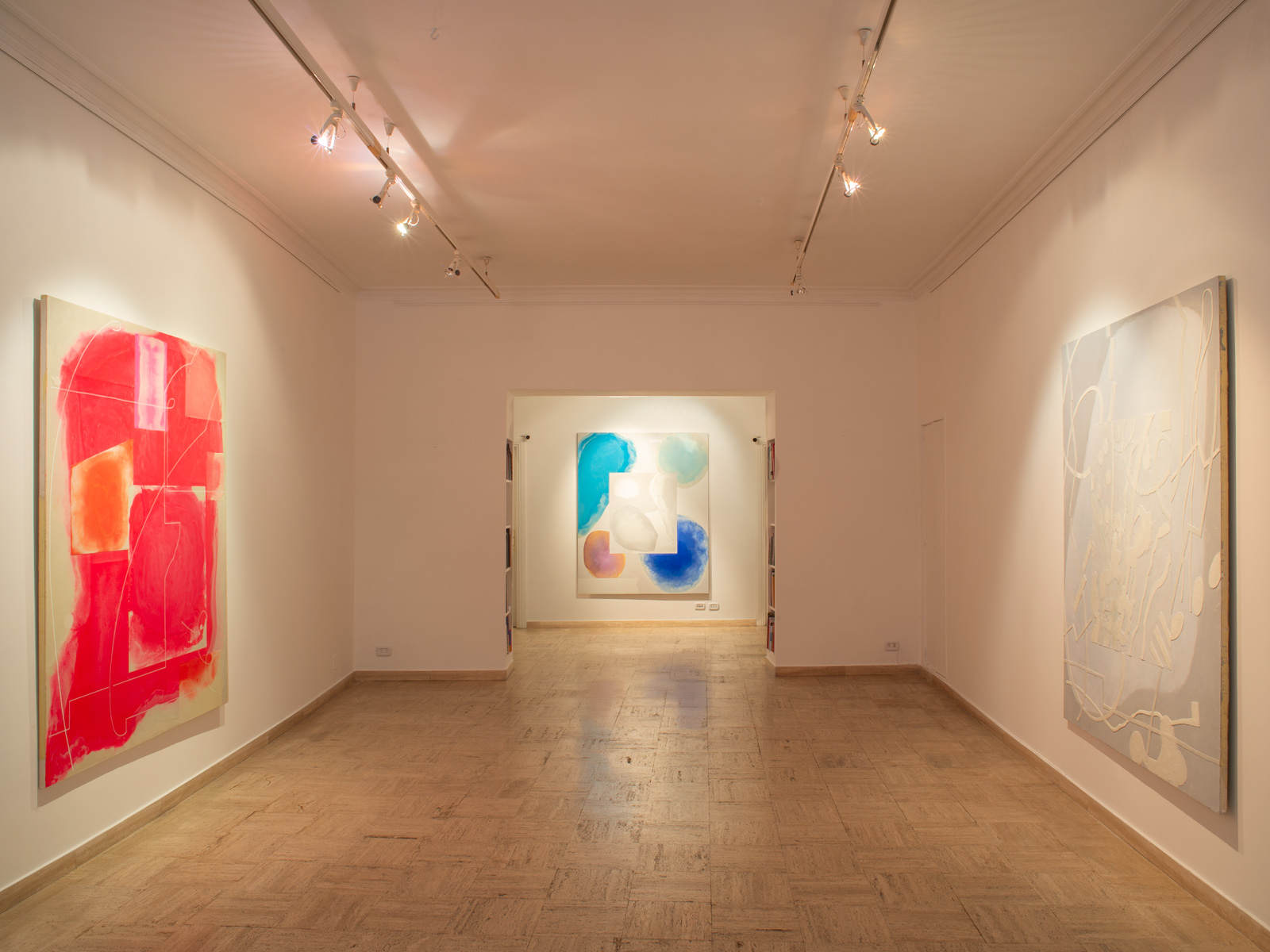
Chapter 4 / SCRATCH CARDS
Gaetano Zampogna
June 4 — June 8, 2019
Scratch Cards Series by Gaetano Zampogna is an ironic and tragic analysis of realty: the characters bizarrely inhabit the “scratch card images”, L’Isola del Tesoro (“Treasure Island”) and Animali Porta Fortuna (“Animal Mascots”), icons of a belittled contemporaneity, represent the expectation of a mediocre catharsis: the false hope of personal wealth.
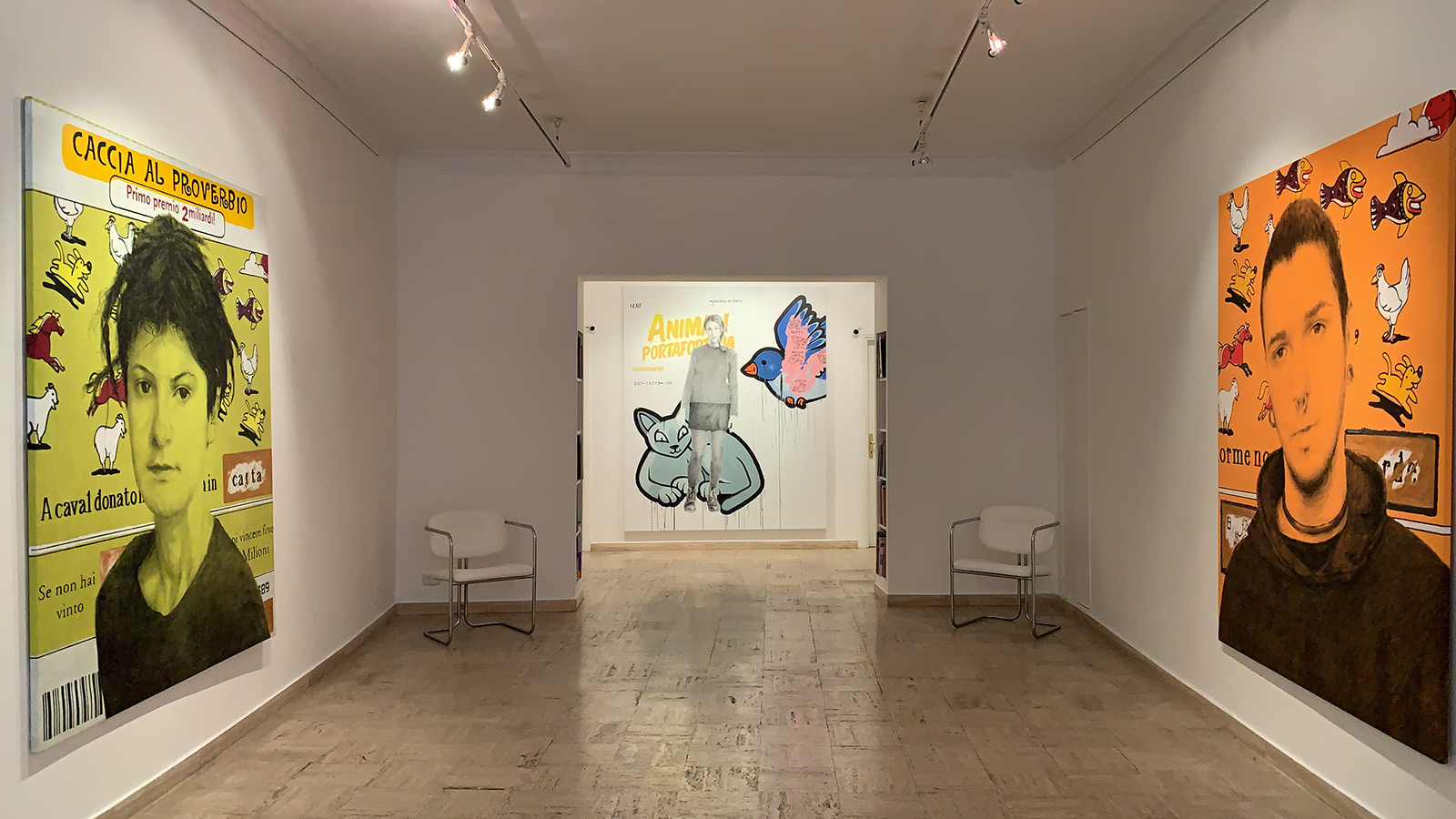
Chapter 5 / THREE
Isabella Ducrot
June 11 — June 15, 2019
On display is an installation piece by Isabella Ducrot called Tre (Three).
Three radically different pieces, divergent in terms of subject matter and materials, bleed into a single horizon line, reaching into a space where utterable and unutterable meet. This suspended place is governed by the mysterious relationship between Eros and Word, an alchemy that morphs into an invocation, using signs to call for a place where beauty can exist devoid of meaning.
The three works by Ducrot are then a triade: the body curled on paper, which reminds us that earthly love is an experience of the divine; the centerpiece: a linen arras on which the word DIO (GOD) is repeated and reduced until it morphs into the single vowel O; and finally a circle repeated on paper as a ceaseless engine in a universe whose aesthetic canon defies our own.
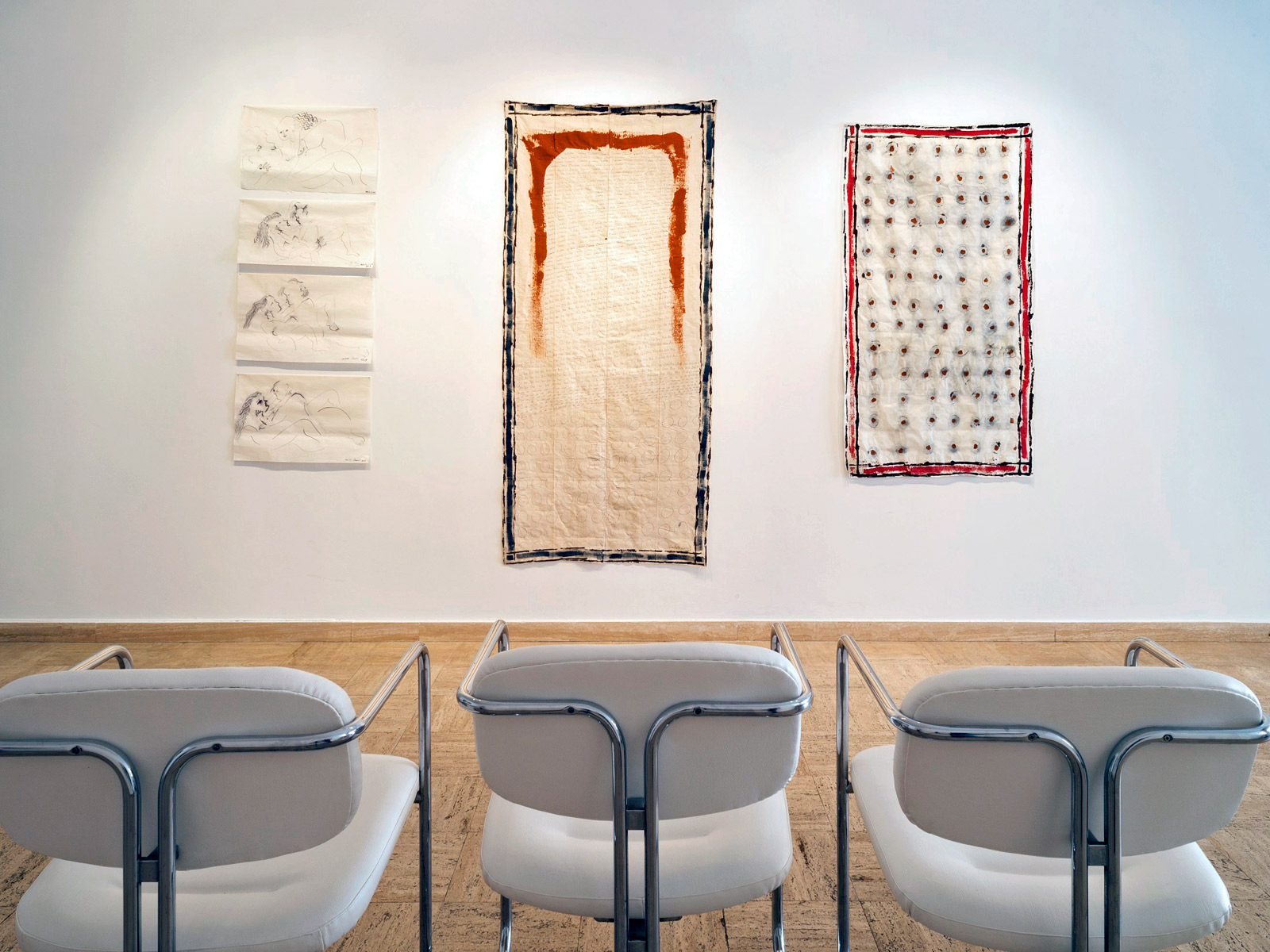
Chapter 6 / SURVIVORS OF MODERNITY
Roberto Nistri
June 18 — June 22, 2019
On show three photos by Roberto Nistri from the long-term photographic project “Survivors of Modernity. Visions from Past Worlds”.
Westerners commonly assume about our planet that it is a place where modernity, with its baggage of advanced technologies and homologated and homologating cultural models, has unquestionably had the upper hand over the tribal world, with its ancient traditions handed down from generation to generation for millennia. In fact, in almost all the continents, there are many pockets of irreducible resistance to the unrelenting planetary progress, and thereof common understanding of it, which seem to radically contradict this vision. Thousands of ethnic groups, most of them at serious risk of disappearance, as well as religious and social groups in countries of the southern hemisphere, practice rites and follow norms of social organization dating back to remote times; and arrived to us, today, unchanged through a path lasting for millennia.
The red thread that links the images of the “Survivors of Modernity” is the documentation of a lost time that in reality is so surprisingly present. An attempt, through the diffusion of knowledge, to defend and preserve from extinction and degradation a remote and important fragment of our humanity.
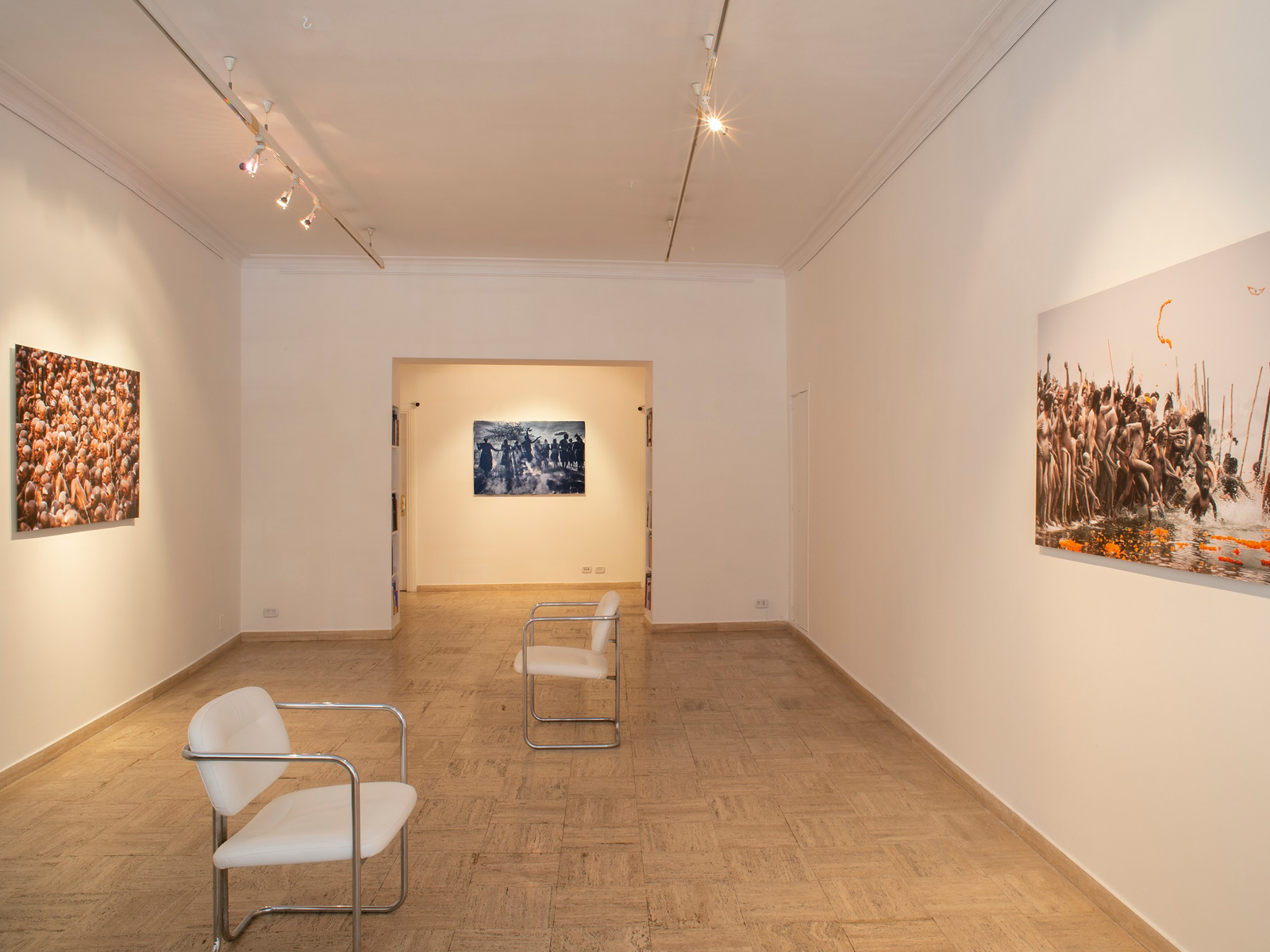
Chapter 7 / THE MARK OF WATER
Georgina Spengler
June 25 — June 28, 2019
The installation The Mark of Water by Georgina Spengler draws inspiration from the work of Leonardo da Vinci “Del moto e misura dell’acqua” (On the Motion and Measurement of Water).
The element of water has always been a part of my visual pictorial vocabulary. I’m fascinated by its metamorphic qualities, the way it changes from a still mirror like surface to turbulent rage, for the way it’s color mutates constantly and for the transformative power it has in changing landscape.
As soon as I saw Leonardo Da Vinci’s On the Motion and Measurement of Water I felt that I had to integrate it into my work. I was completely taken by his meticulous and scientific study of such an elusive and yet powerful force.
By engraving his panels onto my own wood panels I was able to ‘appropriate’ his work in a way which cannot be immediately seen, his diagrams only appear when my own drawing passes over thus making them visible. The act of engraving his technical illustrations was my way of acknowledging and giving a just consideration to his work.
– Georgina Spengler, June 2019
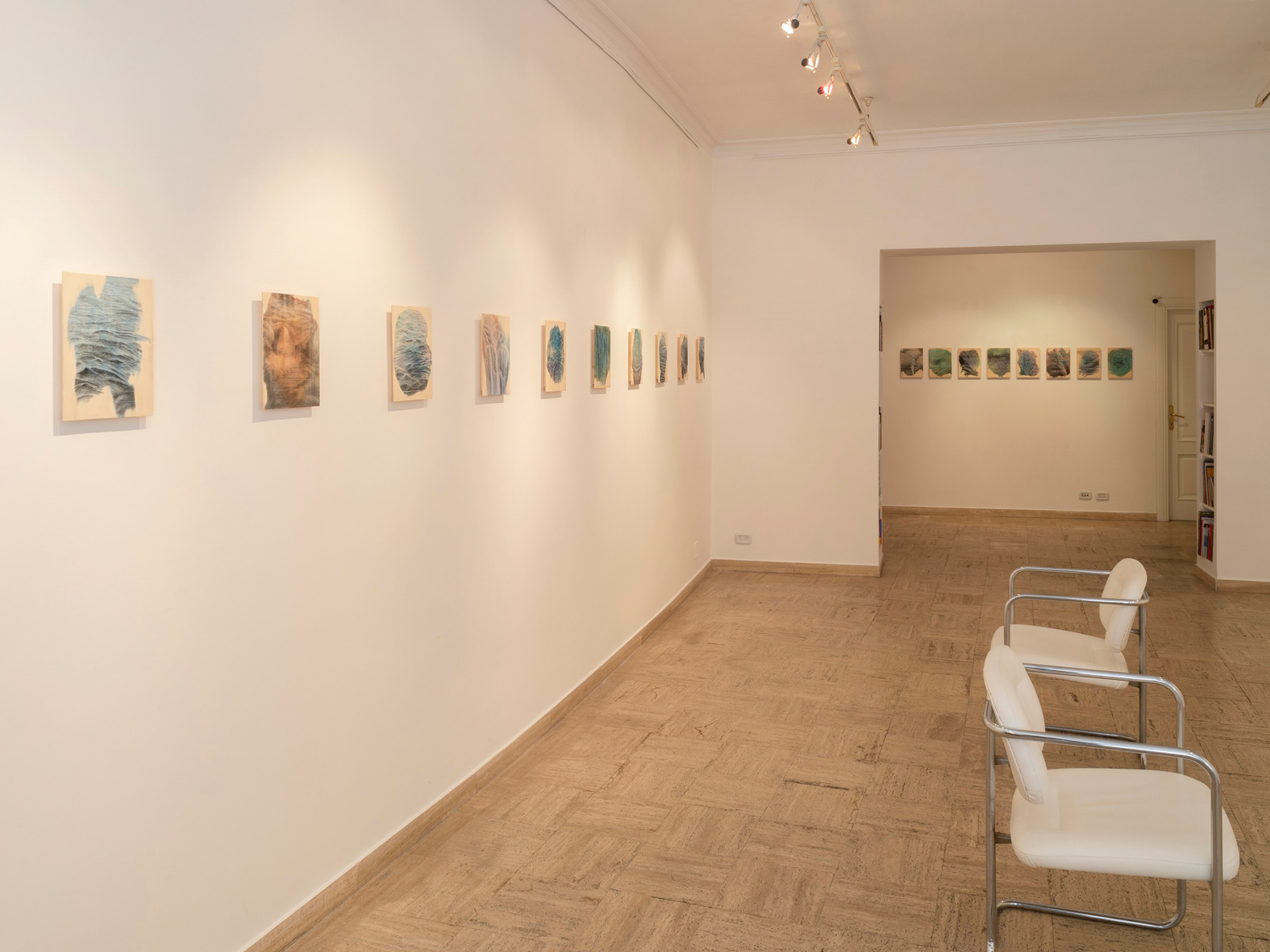
GALLERY
